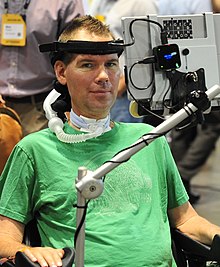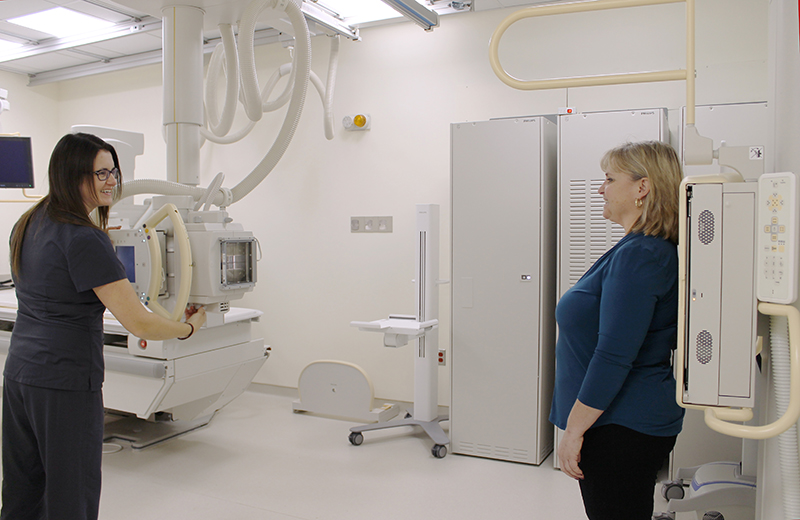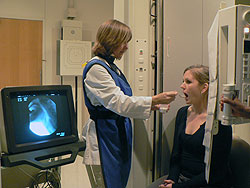Sunday, March 24, 2024
We love nurses
"Good afternoon, and welcome to home health care. I understand, you both are new nursing grads? That's great - congratulations! Welcome to home health. I have been a speech - language pathologist, or SLP, since '83, and at this Agency over five years. In all? Thanks for asking; I've been doing home health about eight years, off and on. Our Director has asked me to give you a brief introduction to speech therapy. Have either of you worked with an SLP? No?? OK then. Let's look over the handout in your binder.
"First: it's my responsibility to reassure you, we are well - trained and well - credentialled healthcare professionals. There are a lot of strange ideas about who we are:
https://www.woosterhospital.org/speech-therapy-myths-debunked/ (Wooster Community Hospital, Ohio)
https://www.speechease.net.au/our-voice/common-misconceptions-about-being-a-speech-pathologist/ (SpeechEase Speech Therapy, Queensland, AUSTRALIA)
https://vozspeechtherapy.com/debunking-the-myths-about-speech-therapy-for-adults/ (VOZ Speech Therapy, Washington, D.C.)
"Our national organization for credentialling and for maintenace of professional standards, the American Speech - Language - Hearing Association or ASHA, has tons of information about our field and what our professionals do:
https://www.asha.org/public/speech/disorders/adultsandl/
"If you are looking for a career and think SLP might meet your career needs, over 300 training programs in the U.S. are available to help you prepare to provide clinical services:
https://find.asha.org/ed/#sort=relevancy
"The academic and practical training that speech - language pathologists receive in accredited university programs addresses the complex interplay of factors impacting human communication.
https://www.elmhurst.edu/academics/departments/communication-sciences-disorders/programs/m-s-communication-sciences-disorders/
https://youtu.be/Rh2_bS5BRFE?si=GyhoUGVhB11pr5VW
https://youtu.be/cT44f62PNjc?si=InqmwlhXbdPiaXVw
"Now, when an SLP student gains her/his master's degree, and becomes certified and licensed, home health care is often NOT a first job option. Agencies tend to look for experienced clinicians to staff SLP positions, largely because of the autonomy required of the SLP to develop, drive and manage a patient's plan of care throughout the home health episode. Some guidelines you might use to decide: will my home health patient benefit from referral to SLP? - are available from the ASHA website.
"Now, since there are three SLP's within our Agency, individual professionals have individual bags of tricks for patient care. You'll now get a peek at my tool kit, while we review the most common types of impairments that might benefit from referral to us. Using the 2023 ASHA Healthcare Survey as a guide, here are five most common impairment domains. The "%age" number accompanying each domain, indicates the percentage of SLP's surveyed, who indicated that the domain was among the top five impairments bringing a referral.
"The most common referral is for a swallowing problem. A big honkin' 92% of all clinicians surveyed, said this domain was among their top five referrals. Beyond the goals of helping the patient consume the least restrictive diet with the lowest possible aspiration risk, we may address management of hydration levels and sustained oral health. Common tools for swallowing treatment can include a foam swab, a packet or container of thickening agent, an NMES (neuromuscular electrical stimulation) or SEMG (surface electromyography) unit, or a breathing trainer (Aspire, spirometer, Acapella or Aerobika). But can you believe, that a drinking straw in a glass of water would be swallowing therapy? A sound level meter (free software app)?? Infant spoon??? A lollipop that you might receive from the bank teller???? Swallowing terms you might see in an SLP report could include: the Masako or tongue-hold maneuver, the modified barium swallow evaluation and 'eating, drinking and swallowing'. Also, if a home health nurse wants to document beyond the OASIS, swallowing issues for a patient, there are easy - to - use screening tools available on the Web: the 3 ounce water swallow test, and the EAT - 10 survey.
https://youtu.be/GbRC488niqE?si=G1m2-r-D56wGQMrG
https://www.ncbi.nlm.nih.gov/pmc/articles/PMC9029253/
"We'll follow the same format, to discuss the remaining four impairment domains that SLP's often see in home health. Each DOMAIN has some expected OUTCOMES after an SLP treatment episode. The domain has some TOOLS associated with the specialty, with commonly used TERMS cited. A SCREENING INSTRUMENT for the domain, that nurses and other home health staff who see the patient can easily use.
"About 83% of the survey respondents said persons with cognition impairments were among their top five referral domains. Outcomes: increase endurance for use of compensatory cognition strategies to meet needs. Tools: calendars, signage, and cognition apps e.g., https://www.lumosity.com/en/. Terms included WRAP (writing down, repetition/routine, associations, picturing), spaced retrieval training https://youtu.be/FiLzX1r8RVI?si=5zsmpS84elCNbL4V, and cueing. A cognition screening test any health professional can use, might be the Mini - Mental State Examination - Second Edition https://www.parinc.com/Products/Pkey/238, or the Mini-Cog assessment https://mini-cog.com/ A 2021 study comparing statistical properties of the Mini - Cog with those of the Brief Interview for Mental Status (BIMS), a component of the OASIS evaluation used in the home health setting, showed Mini-Cog was superior to BIMS at identifying persons with mild cognitive impairment.
"In the area of language and communication, SLP's reported in survey that 80% of them had this domain within their "top 5". Outcomes? The patient demonstrates increased endurance for using oral language to meet ADL needs; also, that the patient achieves criteria for communicative competence: meeting needs, sharing information, sustaining social closeness and observing social etiquette. Tools included paper and pen, tablet, smartphone and speech generating device. Terms: aphasia, anomia, paraphasia. A usable screening test? Either the Cookie Theft picture from the Boston Diagnostic Aphasia Examination, or the Picnic scene from the Western Aphasia Battery.
"Three down, two to go! The next domain known to most SLP's can be termed speech, voice, fluency and cough, where up to 61% of survey respondents claimed this domain within their top five referrals. Outcomes within this category would include increased endurance for increased intelligibility, rate and naturalness; patients might also be working to decrease the intensity and frequency of a chronic cough, or sustain respiratory support for conversational speech. Tools? The breathing trainers mentioned in the area of swallowing; a mirror to give feedback on word and phrase articulation; the sound level meter, also from the swallowing discussion. We depend upon efficient vocal cord function for both operations. Commonly used terms in the domain include hygiene, the Passy-Muir tracheostomy speaking valve, a tracheoesophageal puncture speech system, or a text - to - speech app usable on a smartphone. The 10 - item Voice Handicap Index, or the Leicester Cough Questionnaire are easily - used screening tools for this domain.
"Why are we including this one? Respondents to the Healthcare Survey reported that 0% - absolutely NONE of the SLP's identified persons with hearing problems as among their top five clinical domains. Yet we're teaching our colleagues about hearing loss, because of its relationship to both falls and cognitive impairment in home health patients. What are the top outcomes? That the patient understands oral language to get needs met, or that the patient and support circle manage the assistive technology of the patient to listen. Assistive technology tools would include Personal Sound Amplification Products (PSAP's); Over - the - Counter hearing aids (for mild/moderate hearing loss); and prescription hearing aids (for moderate/severe hearing loss). Terms related to hearing loss treatment will include providing proper lighting, using assistive technology for signalling the patient to gain attention, and supplementing the oral language message with gesturing. How can we assess for hearing loss when we're not audiologists? A perceptual assessment of speech in noise is available online, as the National Hearing Test: free annually to AARP members. An assessment of hearing handicap, the 10-item Hearing Handicap Inventory for the Elderly - Screening, can identify more breakdowns of the real - life listening situations.
"There! All five clinical domains that we SLP's address in home health care. So, where does that leave our connection to our nurses? WE NEED YOUR HELP. Please help us by:
Identifying patients with significant and recent impairments in any of the five core domains;
Teaching patients and support circles in the use of compensatory strategies for sustaining function in the core domains;
Referring patients who might benefit from skilled SLP intervention;
"Thanks again for your participation today. Questions? Welcome to Home Health, and we'll look forward to working with you! Nurses rule!"
Wednesday, March 6, 2024
Turn your head and cough
This is the hospital. I was working the day shift out of fluoroscopy division. My leaden apron and thyroid shield were threatening to shine in the dark, after all the barium compound I had been slinging about lately. On that certain day - a toddler with recent episode of vomiting, then an older man a few days post an initial stroke, and after that - a guy who had complained of a frequent 'tickle' in his throat, sometimes happening with mealtimes, and sometimes not.
Just the facts, please, Sir. The man answered by saying that he needed to cough throughout the day. "It wasn't the kind of cough that made it hard to breathe, but it nagged me and it just won't go away. Warm drinks, cough drops, and then I still feel that I can't cough out what's in there!" The job entrusted to the radiologist and to me included: describe the pharyngeal swallow function, and see how all parts of the sequence were coordinated.
What did the modified barium swallow results tell us? There was no more than trace penetration of swallowed food or liquid into the larynx. Coughs happened, but they were out of sync with the sequence of swallowing. OUT OF SYNC! The radiologist and I agreed: it's not a swallowing problem but a cough problem. As I drilled down into this patient's history, more and more became clear - this was a chronic cough.
Smokers often have a chronic cough. So do many persons with chronic respiratory diseases, and those who have suffered environmental insults to their cardiopulmonary systems. Gastrointestinal insults as well. Persons such as the patient described above may have seen this doctor and that; family medicine, GI medicine, ENT medicine, pulmonology, internal medicine, infectious disease, allergy, etc., etc., before they learn that they have chronic cough.
I told him he most likely had chronic cough. Just the facts, sir.
What to do about this chronic cough? Speech - language pathologists have answers. This case continues.
Subscribe to:
Comments (Atom)










